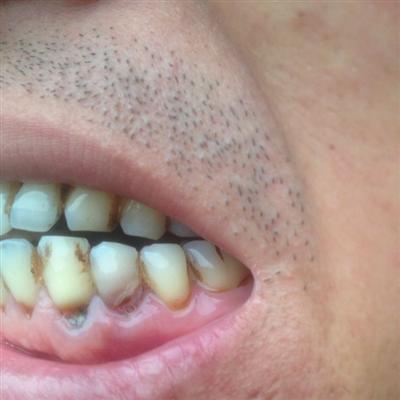What are the early symptoms of salivary gland cyst?
summary
Salivary cyst can occur in three pairs of large salivary glands * * and all small salivary glands. There are two types of retention cyst and congenital cyst. Most of the retention cysts occur in sublingual gland and minor salivary gland, followed by parotid gland. Submandibular gland cyst is very rare. It is caused by constriction of ducts, swelling of tumor, dental calculus, injury and parasites. This is a * interrupted obstruction. When there is no inflammation, the proximal end of the catheter expands and forms retention cyst. Congenital cysts are usually seen in parotid glands. They are developed by epithelial components left in deep tissues during embryonic development. The retention cysts in small salivary glands are called mucous cysts. The cysts in other salivary glands are named after their location * sublingual gland cyst, submandibular gland cyst and parotid cyst.
What are the early symptoms of salivary gland cyst?
* the most common diseases are congenital causes, obstruction of salivary duct by various factors, and retention of salivary fluid. They are mainly composed of epidermoid cells, mucinous cells and intermediate cells (basal like cells). According to the histological characteristics, it can be divided into two types: highly malignant (poorly differentiated) and low-grade malignant (well differentiated). Epidermal like cells and intermediate cells are the main types of high-grade malignancies, and mature mucinous cells and intermediate cells are the main types of low-grade malignancies. However, it is difficult to strictly distinguish these two types. Intermediate cells can differentiate into epidermal like cells or mucinous cells. The capsule of the tumor is uncertain, so it often infiltrates into the surrounding tissue without definite boundary.

Symptom 1: the large salivary gland cyst (sublingual gland, submandibular gland and parotid gland) is the swelling of the diseased part. It may have obstructive symptoms (that is, the swelling is aggravated when eating, and gradually eases after eating). The salivary gland duct mouth can not squeeze out secretory fluid, or discharge discolored and odorous fluid. The puncture can extract viscous white liquid.

Symptom 2: mucocele occurs under the oral mucosa, small (usually soybean size), clear edge, transparent vesicle, painless. Most of them had a history of injury (local bite was the most common). After the ulceration, a viscous white liquid flowed out and the tumor disappeared temporarily, but the ulceration healed quickly and the tumor reappeared.

matters needing attention
Salivary cysts are more common in parotid gland, which are developed from epithelial components left in deep tissues during embryonic development. Salivary gland cyst includes salivary gland mucocele and parotid gland cyst. Mucoceles often occur in small salivary glands, and other salivary gland cysts are named according to their location, namely sublingual gland cyst, submandibular gland cyst and parotid gland cyst. * parotid cyst includes retention of salivary gland cyst and congenital parotid cyst. More common in the elderly, more common in men. The disease is mainly to avoid injury and maintain oral hygiene. * after surgery, there are damaged glands. If we do not pay attention to oral hygiene, we may have salivary fluid retention and recurrent cysts.
















